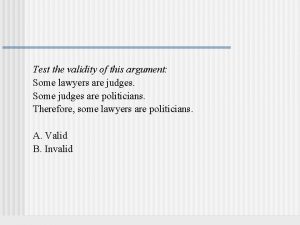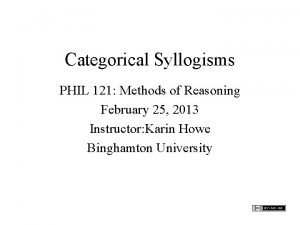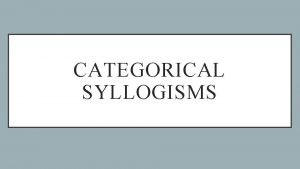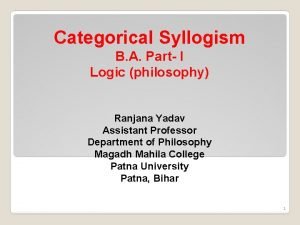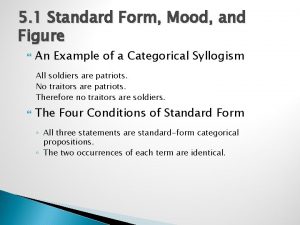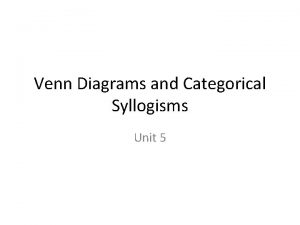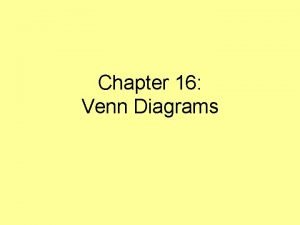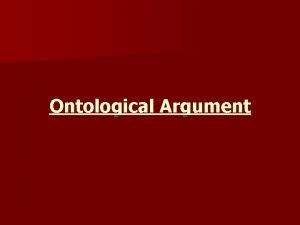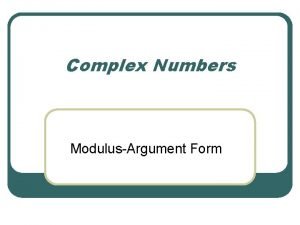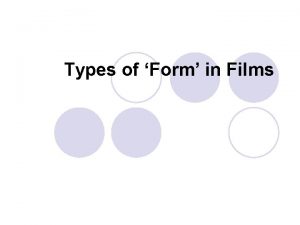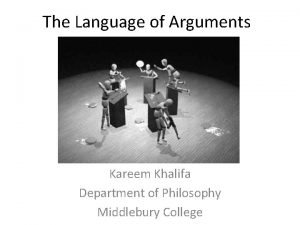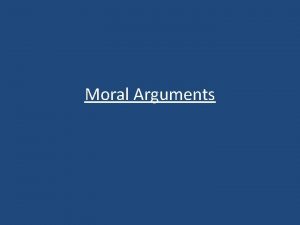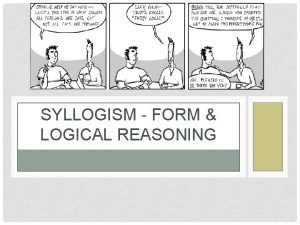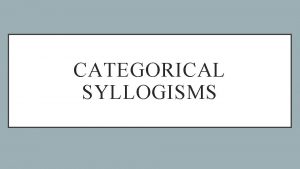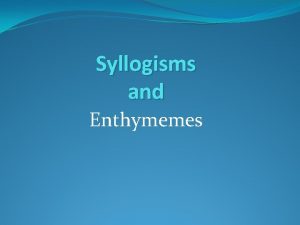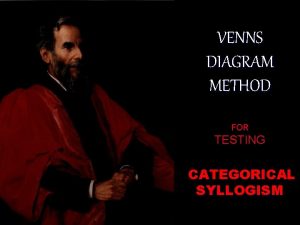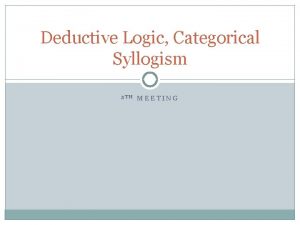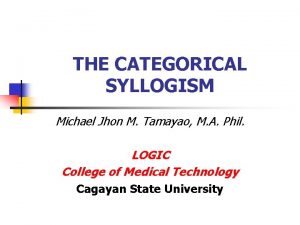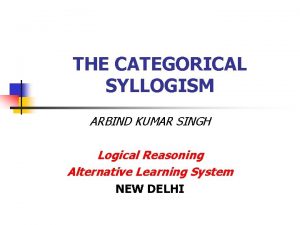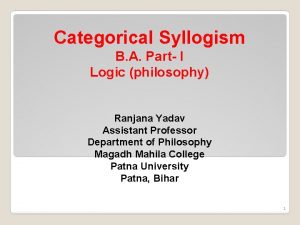syllogism Syllogism An argument in categorical form is












- Slides: 12

syllogism

Syllogism • An argument in categorical form is known as a syllogism • A syllogism is very rigidly structured and formatted: – There are two and only two premises – There is one and only one conclusion – There are three and only three terms

Terms in a Syllogism • The minor term is the subject of the conclusion • The major term is the predicate of the conclusion • The middle term is the term that occurs once in each premise and not in the conclusion.

Premises in a Syllogism • The major premise contains the major and middle terms • The minor premise contains the minor and middle terms

Example • No philosophers are jerks • All Caribbean chickens are jerks • No Caribbean chickens are philosophers

Example • No philosophers are jerks • All Caribbean chickens are jerks • No Caribbean chickens are philosophers • Minor term

Example • No philosophers are jerks • All Caribbean chickens are jerks • No Caribbean chickens are philosophers • Minor term • Major term

Example • No philosophers are jerks • All Caribbean chickens are jerks • No Caribbean chickens are philosophers • Minor term • Major term • Middle term

Example • No philosophers are jerks (Major Premise) • All Caribbean chickens are jerks (Minor Prem. ) • No Caribbean chickens are philosophers • Minor term • Major term • Middle term

Validity • Recall that validity is established if the truth of the premises is preserved in the conclusion. • If it is at all possible that the premises are true while the conclusion is false, then the argument is invalid

Procedure for Venn Diagrams 1. Draw three circles (one for each term) in the appropriate way 2. Label each circle in the appropriate way 3. Diagram each premise in the appropriate way 4. STOP WRITING 5. Look at the conclusion and the diagram and evaluate for validity in the appropriate way

Checking for validity • If you diagram both premises and the diagram then contains all of the information in the conclusion, then the argument is valid • If the conclusion contains information that is not in the premises, that will be reflected on the diagram, and it means the conclusion could be false even while the premises are true. The argument is then invalid.
 Categorical syllogism examples
Categorical syllogism examples Examples of syllogism
Examples of syllogism Categorical syllogism deductive or inductive
Categorical syllogism deductive or inductive Aeio proposition
Aeio proposition Categorical syllogism
Categorical syllogism Vennogram
Vennogram Categorical syllogism venn diagram examples
Categorical syllogism venn diagram examples Anselm argument for god
Anselm argument for god Complex numbers modulus and argument
Complex numbers modulus and argument Categorical film
Categorical film Categorical form documentary
Categorical form documentary Standard argument form
Standard argument form How to write an argument in standard form
How to write an argument in standard form
